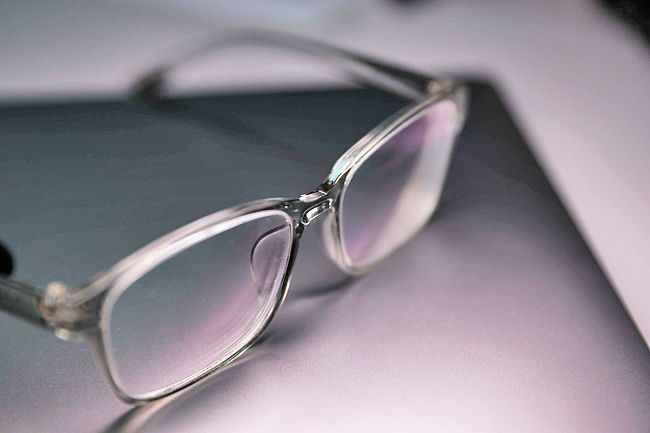THE WASHINGTON POST – Writing from Lodi, Italy (which is not far from Milan), reader Brenda Philips asks: How many people wear glasses? And, more importantly, why are spectacles so spectacularly ubiquitous these days?
For now, we’ll assume Brenda’s inquiry is utterly innocent. The simple answer is that about two-thirds of American adults wear some kind of glasses or contacts. According to our analysis of more than 110,000 responses to the National Health Interview Survey conducted by the Census Bureau on behalf of the National Center for Health Statistics, 62 per cent of respondents said they donned some form of corrective eyewear in a recent three year-period.
But we’ve got bad news for Brenda: That answer is not as definitive as it sounds.
For starters, it probably doesn’t cover everybody who wears frames or sunglasses because they look awesome, or because they’ve boarded the blue-light bandwagon, or for any other reason not related to vision correction.
Moreover, eyewear is not evenly distributed even among seemingly similar groups. The ubiquity of eyeglasses in your personal universe will change depending on whether you’re hanging out with young legal workers (ages 25 to 39) or your friends who work in agriculture or construction. That’s because the legal workers are more than twice as likely to wear glasses.
What’s actually going on here? If good vision is hereditary, as we assume, how could your occupation determine your need for vision correction?


As we cast about for an answer, we ran into a minor obstacle: the entire field of ophthalmology. It turns out the eye is excruciatingly complicated, people spend their entire lives studying it, and some frazzled columnist and his database aren’t going to crack this question wide open in just a week.
For help, we called eye-data expert Bonnielin Swenor, director of the Johns Hopkins Disability Health Research Center. Swenor pointed us to her friend and colleague, Johns Hopkins Wilmer Eye Institute paediatric ophthalmologist and researcher Megan Collins, who appears to know everything about eyeballs.
Collins pointed out that the simple survey question we’re using – “Do you wear glasses or contact lenses?” – covers a host of underlying conditions, from astigmatism to eyestrain to I-want-people-to-take-me-seriously-itis. But to keep it simple (perhaps overly so) we’ll focus on two common conditions: myopia and presbyopia.
Myopia can strike young: Folks who start wearing glasses as children or teens are often correcting myopia, otherwise known as nearsightedness. For people with myopia, nearby objects appear clear, but distant objects blur.
Presbyopia strikes old: It hits almost all of us in our 40s or later, reducing nearby objects to maddening blurs while farther-away objects remain clear. (It comes from the Greek word presbys, roughly meaning elder. And yes, it shares that root with presbyterian, a type of church led by elders.)
What’s behind the curse of presbyopia? As Collins explained, the lens in our eye gets stiffer and less flexible with age, a trend some of us can absolutely relate to. Since the muscles in the eye can’t bend the hardened lens to focus as easily, our eyeballs’ zoom function stops working so well. Soon, we’re squinting at screens and holding the restaurant menu half a mile (0.8 kilometres) from our faces. That’s when we wind up with reading glasses, one of those goofy magnifier headsets or – if we already have glasses for myopia or another condition – bifocals.
Data shows the presbyopia-driven wave of glasses use starts rising around age 40 and doesn’t level off until people near age 60. If we wanted a variable that best defines middle age, we could do worse than the onset of presbyopia. But myopia is the condition more relevant to Brenda’s question about the increasing popularity of glasses. Because it turns out that, yes, myopia is on the march.
In a 2009 JAMA Ophthalmology publication, National Institutes of Health ophthalmologists found that the prevalence of myopia had increased from 25 per cent of the population age 12 to 54 in 1971 and 1972 to 42 per cent of people in that age range in 1999 to 2004. The study was based on thousands of physical exams conducted for the National Health and Nutrition Examination Survey.
That, of course, raises more questions. Kids’ genes couldn’t have changed that much since the 1970s. So why are so many more of them myopic?
Swenor and Collins explained that while kids may not have changed, the world around them sure has. And key changes in the way kids grow up – many associated with urban living and consumer technology – have been hard on the eyes.
Myopia typically hits because your eye stretches out while it’s still growing. A myopic eyeball is elongated like an alligator egg, which causes light bent by the lens to hit in front of the retina’s rods and cones instead of directly on them. So you can read the ingredients on a can of refried beans without help but may require glasses, contacts or a monocle to clearly see your aunt grilling loin chops across the yard.
Researchers keep finding new factors that may be linked to your likelihood of developing myopia, and while nothing’s settled yet, a couple factors keep rising to the top. According to a review of myopia research, and Collins, spending time outdoors is one of the best things a kid can do for healthy eye growth.
Though Collins also reminds kids to protect their eyes with a hat or sunglasses while they’re out there. (She also recommends eating plenty of leafy greens, for the record.)
Outdoor light may help your eyes grow, and being outside gives your eyeballs more opportunities to flex their muscles by focusing on distant objects. While data is surprisingly scarce, available evidence suggests kids may spend less time outdoors than they did a generation or two ago.
“We know that for children to reach their full potential – to experience truly healthy development – spending regular time outdoors in unstructured play is essential,” Laura Mylan of the national nonprofit Children and Nature Network told us. “And we’ve lost that in today’s world.”
Myopia has risen even more rapidly in East Asia, where countries have attempted sweeping remedies. A programme in Taiwan, for example, encouraged students to participate in two hours of outdoor activity every day. After it began in 2010, researchers found in the journal Ophthalmology, Taiwan’s long rise in myopia went into reverse.
More recently, vision tests from almost 125,000 children in eastern China showed that myopia increased when they were confined to their homes during the coronavirus pandemic – especially among younger children ages six to eight, according to an analysis in JAMA Ophthamology. Another likely driver is more time spent doing near work such as studying, reading, working on the computer, or even watching television. Not only do such activities require you to focus on close objects, but they also typically take place indoors.
People also are more educated today, and many studies find that the more education you have, the more likely you are to be myopic. That correlation, of course, is probably related to the first two factors: To get a diploma or degree, you’ll probably spend more time indoors studying.
Education gaps often accompany much of the difference in myopia – and thus the glasses gap – among groups: Women are more likely to wear glasses than men. High earners are more likely to wear glasses than low earners. And Asian and White Americans are more likely to wear glasses than their Black and Hispanic compatriots.
We don’t have geographic data on glasses, but models from the Vision and Eye Health Surveillance System (the product of a partnership between the Centers for Disease Control and Prevention (CDC) and NORC at the University of Chicago) show residents of the least-educated states are actually among the most likely to have serious eye problems that aren’t corrected by glasses, which Swenor said can include eye conditions that result from uncontrolled diabetes.
The CDC group also has produced county-level estimates of serious vision loss, using insurance claims and medical records, as well as county, state and national demographics.
Education was not included, but again the less educated areas seem to face more dire vision issues.
Of course, myopia is not the only reason a more-educated person might be more likely to wear glasses. “There are a number of other factors that may be at play too,” Collins said, “including cost of eyeglasses, access to vision care, health literacy, or trust in the healthcare system”.
More educated Americans are also more likely to be doing jobs that require near work, such as typing or reading, and thus more likely to don reading glasses to compensate for the slow advance of presbyopia. – Andrew Van Dam



